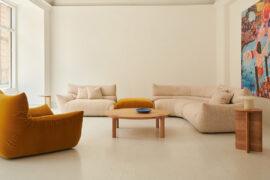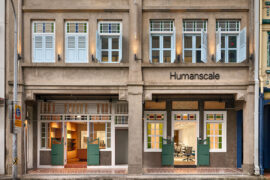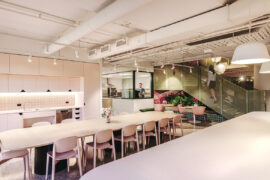“Good ergonomic workplace design will increase productivity by an average of 12 per cent.”– Dr Alan Hedge.

In recent years, Australia has established itself as a leader in commercial design. Around the world, we’ve earned a reputation as innovators when it comes to office furniture, lighting, interiors, and architecture. We’re known early adapters to new technology and the ABW model, and are future-oriented when it comes to our taste and tendencies in design. Crucially, the Australian design industry has wholeheartedly embraced the inclusion in workplace design of ergonomics, the science of adjusting the task to the worker (and not the other way around) to maximise productivity and reduce discomfort, fatigue, and injury.
Yet our position at the vanguard of commercial design is at odds with the Australian Standards pertaining to ergonomics – the paramount national guidelines in this respect – which have not been updated in 20 years. The original Australian Standard concerning ergonomics was the 11-page AS 3590.2-1990 Screen-based workstations; Part 2: Workstation Furniture, which in 1997 was superseded by the significantly heftier AS/NZS 4443:1997 Office panel systems – workstations (‘the Standard’). This in turn is bolstered by AS/NZS 4442: 1997 Office Desks and AS/NZS 4438: 1997 Height adjustable swivel chairs. The Standard “specifies minimum requirements…leaving designers and manufacturers the maximum opportunity to develop suitable products”.
Although a one-size-fits-all approach goes against the flexibility that is at the core of ergonomics, the Australian Standards remain valuable guidelines that are in need of updating. Significant changes in the workplace in the past two decades have rendered much of the content of the Standard irrelevant or obsolete. In this whitepaper (below), we look at the leading ergonomic concepts and principles that the Australian Standards fail to cover, and discuss ways to bridge this gap.

"If the document hasn't automatically downloaded in 10 seconds, download here."
Please note by accessing advertiser content your details may be passed onto the advertiser for fulfilment of 'the offer' and also permits the advertiser to follow up the fulfilment of the offer by email, phone or letter. The subscriber also permits further communication from indesignlive.com.
INDESIGN is on instagram
Follow @indesignlive
A searchable and comprehensive guide for specifying leading products and their suppliers
Keep up to date with the latest and greatest from our industry BFF's!

London-based design duo Raw Edges have joined forces with Established & Sons and Tongue & Groove to introduce Wall to Wall – a hand-stained, “living collection” that transforms parquet flooring into a canvas of colour, pattern, and possibility.

A curated exhibition in Frederiksstaden captures the spirit of Australian design

For Aidan Mawhinney, the secret ingredient to Living Edge’s success “comes down to people, product and place.” As the brand celebrates a significant 25-year milestone, it’s that commitment to authentic, sustainable design – and the people behind it all – that continues to anchor its legacy.

Humanscale’s new showroom is about the modern workplace, with ergonomic excellence, sustainable design and architectural heritage in Singapore.

Humanscale’s Chief Sustainability Officer is embarking on a tour of Australia, delivering a talk entitled: “Sustainable by Design: Materials Transparency for a Healthier Planet.” At the same time, the company opens a brand new showroom in Sydney. We met her to find out more.

Winner of the 2025 RedDot Design Awards, the newly relaunched Flo monitor arm by Colebrook Bosson Saunders (CBS) brings refined ergonomics and effortless movement to the forefront of modern workspaces – proving that comfort and performance start at the desk.
The internet never sleeps! Here's the stuff you might have missed

With Steelcase having reopened its refreshed WorkLife Showroom in Singapore this year, we spoke to Navedita Shergill about some key workplace macro shifts identified in their research.

Gray Puksand’s adaptive reuse of former Melbourne office into Hester Hornbrook Academy’s new City Campus shows how architecture can support wellbeing, connection and community.